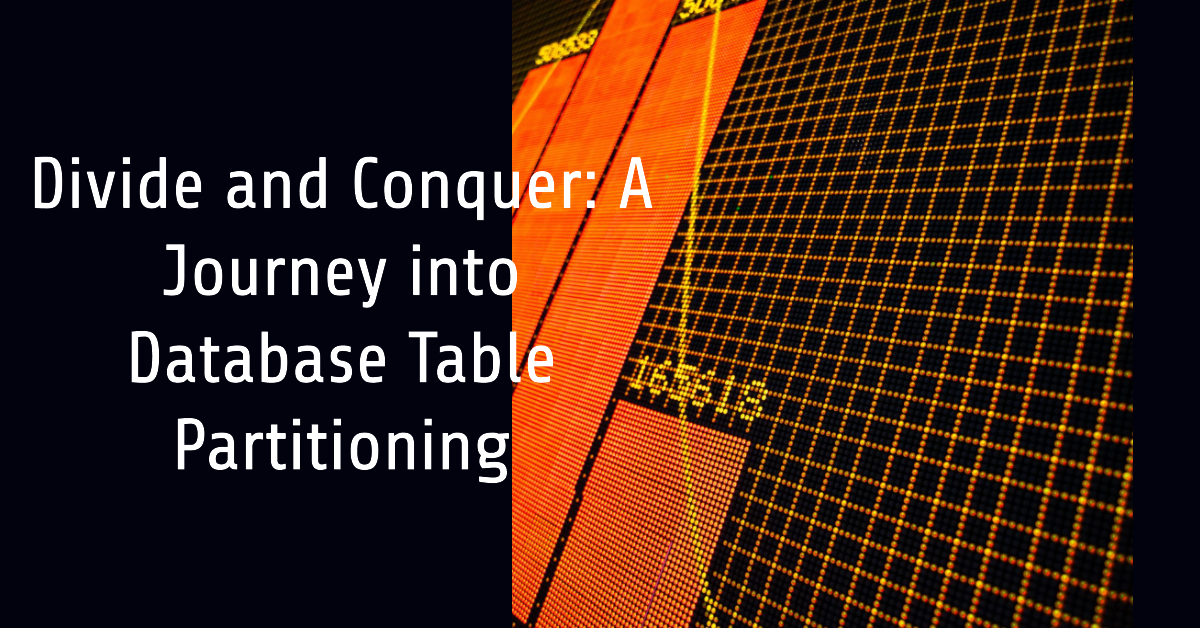Database Table Partitioning
Database table partitioning is a strategy used to divide a large database table into smaller, manageable segments, known as partitions, while maintaining the overall structure and functionality of the table. This technique is implemented in database management systems like Microsoft SQL Server (MSSQL) and PostgreSQL (Postgres).
What is Database Table Partitioning?
Database table partitioning involves breaking down a large table into smaller segments. Each partition contains a subset of the table’s data, based on specific criteria such as date ranges or geographic locations. This allows for more efficient data management and can significantly improve performance for certain types of queries.
Impact of Partitioning on CRUD Operations
- Create: Streamlines the insertion of new records to the appropriate partition, leading to faster insert operations.
- Read: Enhances query performance as searches can be limited to relevant partitions, accelerating read operations.
- Update: Makes updating data more efficient, but may add overhead if data moves across partitions.
- Delete: Simplifies and speeds up deletion, especially when dropping entire partitions.
Advantages of Database Table Partitioning
- Improved Performance: Particularly for read operations, partitioning can significantly enhance query speeds.
- Easier Data Management: Managing smaller partitions is more straightforward.
- Efficient Maintenance: Maintenance tasks can be conducted on individual partitions.
- Organized Data Structure: Helps in logically organizing data.
Disadvantages of Database Table Partitioning
- Increased Complexity: Adds complexity to database management.
- Resource Overhead: May require more disk space and memory.
- Uneven Performance Risks: Incorrect partition sizing or data distribution can lead to bottlenecks.
MSSQL Server: Example Scenario
In MSSQL, table partitioning involves partition functions and schemes. For example, a SalesData table can be partitioned by year, enhancing CRUD operation efficiency. Here’s an example of how you might partition a table in MSSQL:
-- Create a partition function
CREATE PARTITION FUNCTION SalesDataYearPF (int)
AS RANGE RIGHT FOR VALUES (2015, 2016, 2017, 2018, 2019, 2020);
-- Create a partition scheme
CREATE PARTITION SCHEME SalesDataYearPS
AS PARTITION SalesDataYearPF ALL TO ([PRIMARY]);
-- Create a partitioned table
CREATE TABLE SalesData
(
SalesID int IDENTITY(1,1) NOT NULL,
SalesYear int NOT NULL,
SalesAmount decimal(10,2) NOT NULL
) ON SalesDataYearPS (SalesYear);
PostgreSQL: Example Scenario
In Postgres, partitioning uses table inheritance. A rapidly growing Logs table can be partitioned monthly, optimizing CRUD operations. Here’s an example of how you might partition a table in PostgreSQL:
-- Create a master table
CREATE TABLE logs (
logdate DATE NOT NULL,
logevent TEXT
) PARTITION BY RANGE (logdate);
-- Create partitions
CREATE TABLE logs_y2020m01 PARTITION OF logs
FOR VALUES FROM ('2020-01-01') TO ('2020-02-01');
CREATE TABLE logs_y2020m02 PARTITION OF logs
FOR VALUES FROM ('2020-02-01') TO ('2020-03-01');
Conclusion
Database table partitioning in MSSQL and Postgres significantly affects CRUD operations. While offering benefits like improved query speed and streamlined data management, it also introduces complexities and demands careful planning. By understanding the advantages and disadvantages of partitioning, and by using the appropriate SQL commands for your specific database system, you can effectively implement this powerful tool in your data management strategy.
